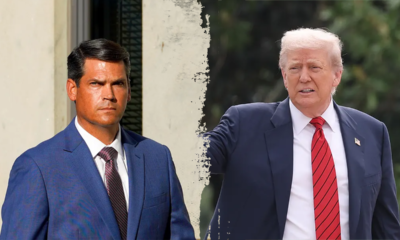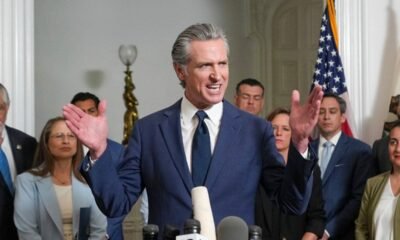INTERNACIONAL
Pope Francis and US presidents: A look back at his legacy with the nation’s leaders
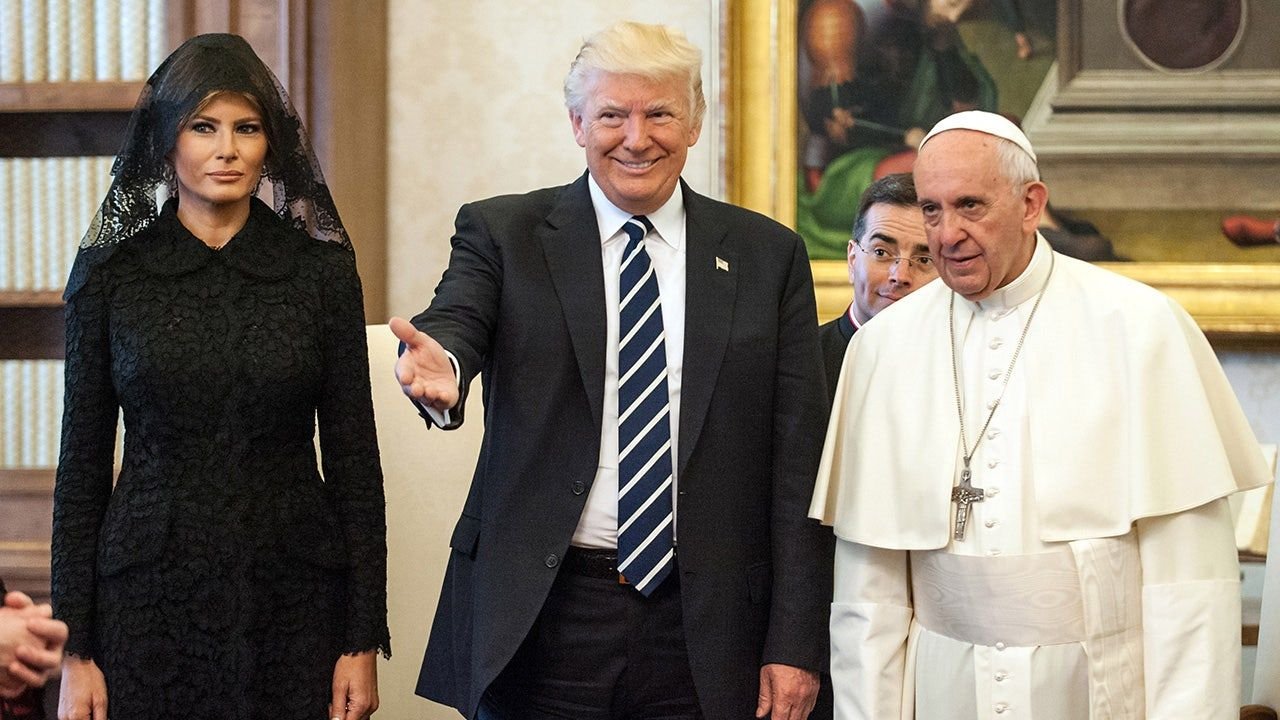
U.S. presidents mourned the death of Pope Francis, who served as the leader of the Catholic Church for 12 years, on Monday following the Vatican’s announcement of the pope’s passing.
«Rest in Peace Pope Francis!» President Donald Trump said in a post on Truth Social on Monday. «May God Bless him and all who loved him!»
The College of Cardinals elected Pope Francis, 88, to serve as the pope following Pope Benedict XVI in March 2013. His election marked the first time a non-European served as pope in more than 1,000 years. Pope Francis, born with the name Jorge Mario Bergoglio, originally hailed from Argentina.
Pope Francis, who was hospitalized in February due to complications stemming from bronchitis and pneumonia, died Monday at the Vatican’s Casa Santa Marta.
Vice President JD Vance, who converted to Catholicism in 2019, met with Pope Francis on Sunday in one of the reception rooms of the Vatican hotel just hours before the pope’s death. Vance acknowledged the visit in a post on X Monday while expressing his condolences to Christians who loved the pope, and shared a link to the transcript of one of the pope’s 2020 homilies.
POPE FRANCIS DEAD AT 88, VATICAN SAYS
Pope Francis receives U.S. Vice President JD Vance, left, before bestowing the Urbi et Orbi (Latin for to the city and to the world) blessing at the end of the Easter mass presided over by Cardinal Angelo Comastri in St. Peter’s Square at the Vatican Sunday, April 20, 2025. (Vatican Media via AP)
«My heart goes out to the millions of Christians all over the world who loved him. I was happy to see him yesterday, though he was obviously very ill,» Vance said in a post on X on Monday. «But I’ll always remember him for the below homily he gave in the very early days of COVID. It was really quite beautiful. May God rest his soul.»
Trump also signed an executive order Monday ordering all U.S. flags be flown at half-staff on all public buildings and grounds, at all military posts and naval stations, and on all naval vessels to remember Francis. The order also applies to all U.S. embassies, legations, consular offices, and other facilities abroad, including military facilities and naval vessels and stations.
Here’s a look at Pope Francis’ legacy with other U.S. leaders:
Barack Obama
Pope Francis met with former President Barack Obama at the Vatican in March 2014. The two met again in September of the following year during Pope Francis’ visit to the White House, where the pope delivered a statement urging action on climate change. Following his visit to the White House, Francis also visited New York City and Philadelphia.
Obama issued a statement Monday morning lauding the pope for his leadership.
POPE FRANCIS EXPOSES CONFIDENTIAL DETAILS ABOUT HIS ELECTION AND RELATIONSHIPS IN LENGTHY INTERVIEW
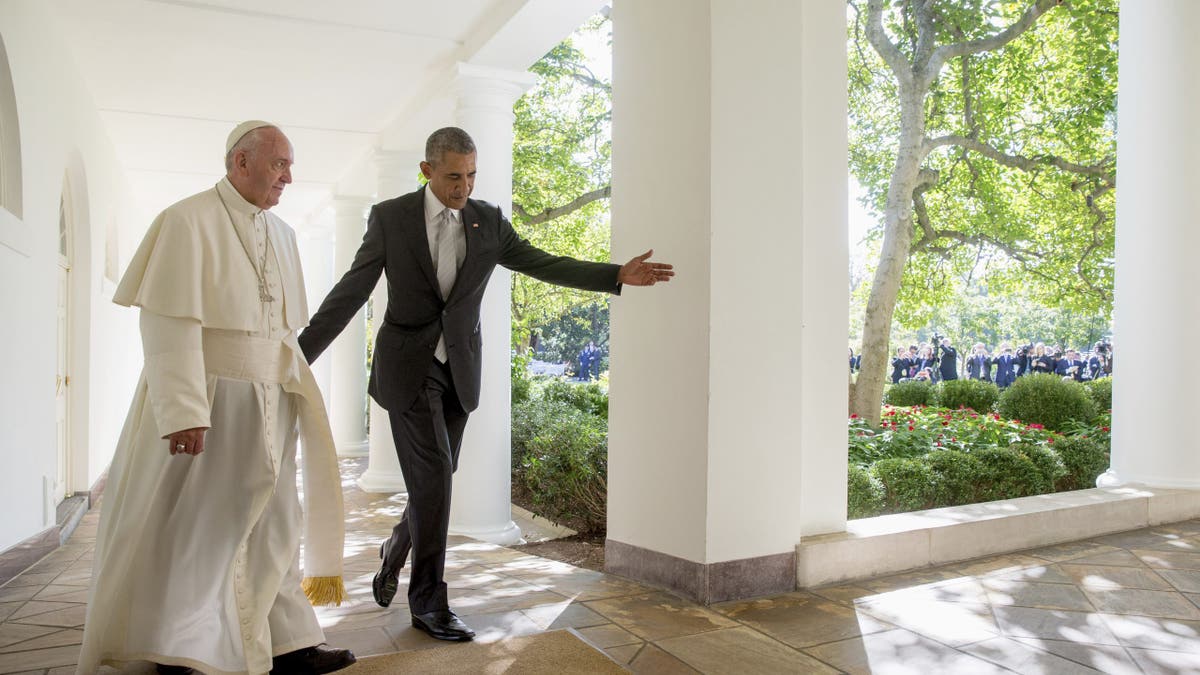
President Barack Obama and Pope Francis walk down the Colonnade before meeting in the Oval Office of the White House in Washington on Sept. 23, 2015.
«In his humility and his gestures at once simple and profound – embracing the sick, ministering to the homeless, washing the feet of young prisoners – he shook us out of our complacency and reminded us that we are all bound by moral obligations to God and one another,» Obama said in a post on X Monday morning.
«Today, Michelle and I mourn with everyone around the world – Catholic and non-Catholic alike – who drew strength and inspiration from the Pope’s example,» Obama said. «May we continue to heed his call to ‘never remain on the sidelines of this march of living hope.’»
Donald Trump
Trump met with Pope Francis in 2017 during a trip to the Vatican, and told reporters later that they had a «fantastic meeting.» However, the two remained at odds with one another over Trump’s border policies for the last decade.
«A person who thinks only about building walls, wherever they may be, and not building bridges, is not Christian,» Pope Francis said in February 2016 amid Trump’s push on the campaign trail to build a border wall and crack down on illegal immigration.

Pope Francis meets President Donald Trump in the Private Library of the Apostolic Palace in Vatican City on May 24, 2017. (Vatican/Pool/Galazka/Archivio Grzegorz Galazka/Mondadori via Getty Images)
In response, Trump said: «For a religious leader to question a person’s faith is disgraceful.»
Pope Francis routinely issued similar statements, and in February penned a letter to U.S. Catholic bishops and voiced concern about the Trump administration’s mass deportation plans.
«The act of deporting people who in many cases have left their own land for reasons of extreme poverty, insecurity, exploitation, persecution or serious deterioration of the environment, damages the dignity of many men and women, and of entire families, and places them in a state of particular vulnerability and defenselessness,» Pope Francis said in the letter.
Joe Biden
Former President Joe Biden, the second Catholic U.S. president, visited the Vatican in October 2021, where he and Pope Francis met to discuss topics including climate change and advocacy for the poor, according to a readout of the meeting.
Biden had previously met Pope Francis on several other occasions, including during the pope’s visit to the U.S. in 2015.
Biden also met with Pope Francis in June at the G7 Leaders’ Summit in Apulia, Italy, where the two discussed the ongoing Israel-Hamas war, the humanitarian crisis in Gaza, and the conflict between Ukraine and Russia, according to a readout of the meeting.
CLICK HERE TO GET THE FOX NEWS APP

Pope Francis meets President Joe Biden and First Lady Jill Biden at the Apostolic Palace on Oct. 29, 2021 in Vatican City, Vatican. (Vatican Media via Vatican Pool/Getty Images)
Biden, who awarded Pope Francis the Presidential Medal of Freedom in January, described him as a «consequential» leader on Monday who was a «Pope for everyone.»
«He was unlike any who came before him,» Biden said in a post on X Monday morning. «Pope Francis will be remembered as one of the most consequential leaders of our time and I am better for having known him. For decades, he served the most vulnerable across Argentina and his mission of serving the poor never ceased. As Pope, he was a loving pastor and challenging teacher who reached out to different faiths.»
Fox News’ Emma Colton contributed to this report.
Pope Francis,White House,Vatican News & Updates,Trump’s First 100 Days,Donald Trump
INTERNACIONAL
Quiénes son los líderes europeos que firmaron una carta pidiendo mantener la presión sobre Rusia antes de la cumbre Trump-Putin
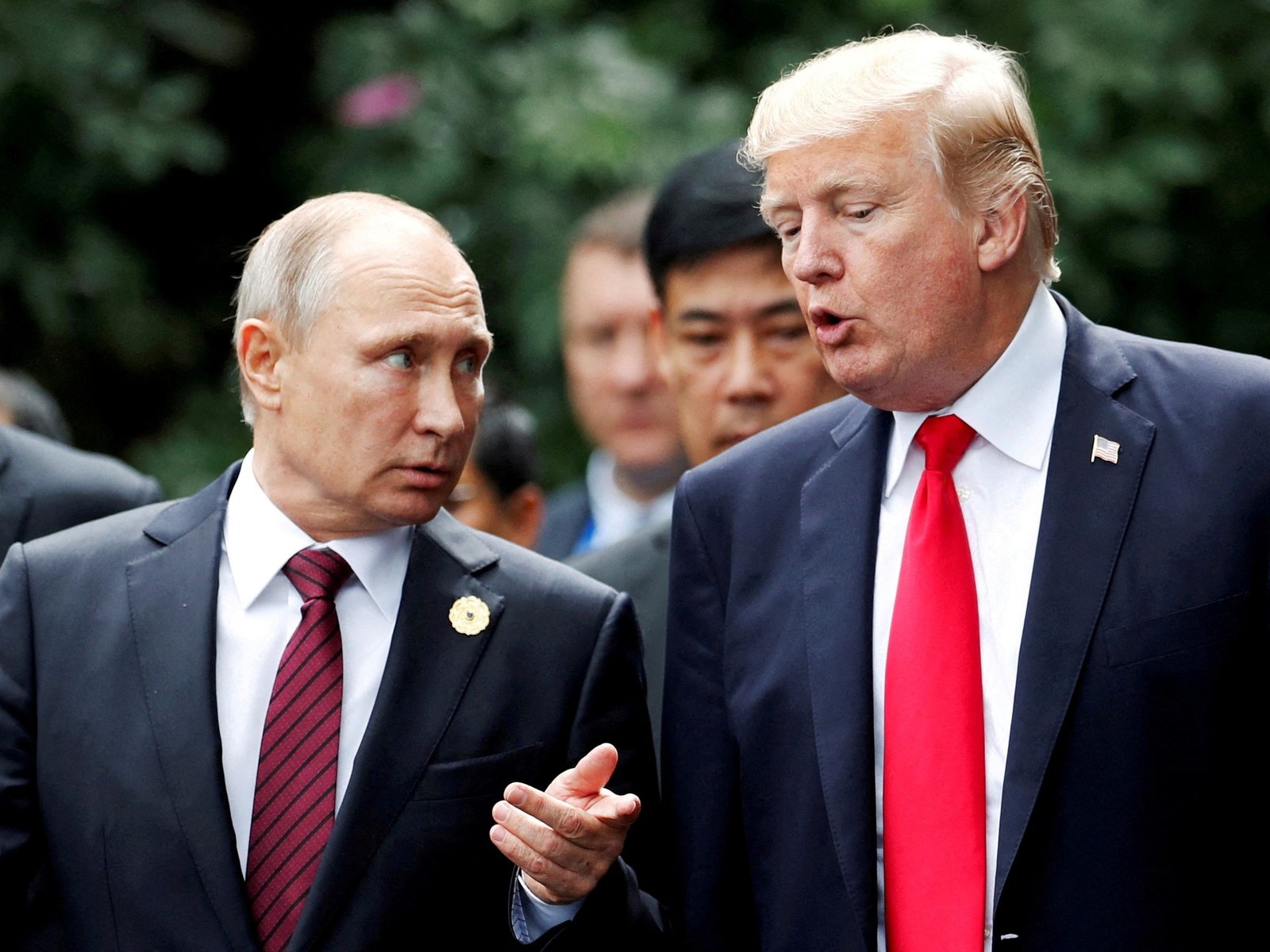
Por ahora, posiciones irreconciliables
Donald Trump,Vladimir Putin,Rusia,Ucrania,Guerra Rusia-Ucrania,Últimas Noticias
INTERNACIONAL
Líderes europeos reafirmaron su apoyo a Ucrania y llamaron a mantener la presión sobre Rusia antes de cumbre entre Trump y Putin
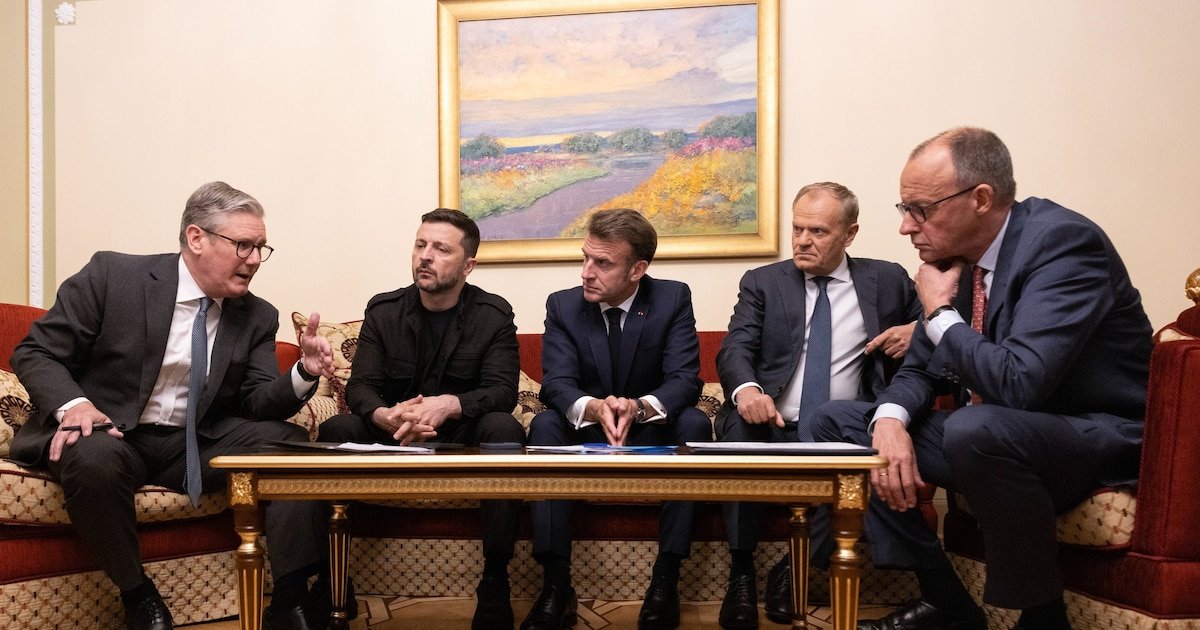
Los principales líderes europeos reafirmaron este domingo su apoyo a Ucrania y llamaron a mantener la presión sobre Rusia para alcanzar la paz, días antes de la reunión prevista entre los presidentes Vladimir Putin y Donald Trump el próximo 15 de agosto en Alaska.
La cumbre, anunciada por Trump el viernes, forma parte de sus esfuerzos por buscar una salida al conflicto iniciado con la invasión rusa en febrero de 2022. El encuentro se celebrará sin la presencia del presidente ucraniano, Volodimir Zelensky, quien ha reclamado participar en las negociaciones.
Trump adelantó que el eventual acuerdo “incluirá algún intercambio de territorios para el beneficio de ambos”, en referencia a Ucrania y Rusia, sin dar más detalles. Zelensky rechazó esa posibilidad: “No pueden tomarse decisiones en nuestra contra, no pueden tomarse decisiones sin Ucrania. Sería una decisión contra la paz. No conseguirán nada. Los ucranianos no entregarán su tierra al ocupante”, afirmó el sábado en redes sociales.
En conversaciones separadas con Zelensky, el presidente francés, Emmanuel Macron, y el jefe del Gobierno español, Pedro Sánchez, expresaron su respaldo a Kiev. Macron señaló en X que “el futuro de Ucrania no puede decidirse sin los ucranianos”, mientras que Sánchez abogó por “una paz justa y duradera que respete la independencia y la soberanía” del país.

Además, los mandatarios europeos firmaron una declaración conjunta en la que sostienen que “solo un enfoque que combina una diplomacia activa, el apoyo a Ucrania y la presión sobre la Federación Rusa” podrá poner fin a la guerra. “Aplaudimos el trabajo del presidente Trump por detener la masacre en Ucrania” y “estamos listos para apoyar ese trabajo en el plano diplomático, además de mantener nuestro sustancial apoyo militar y financiero a Ucrania”, añade el texto.
Entre los firmantes figuran Macron, la primera ministra italiana, Giorgia Meloni; el canciller alemán, Friedrich Merz; el primer ministro polaco, Donald Tusk; el primer ministro británico, Keir Starmer; el presidente finlandés, Alexander Stubb, y la presidenta de la Comisión Europea, Ursula von der Leyen.
En paralelo, el presidente brasileño, Luiz Inácio Lula da Silva, conversó el sábado por teléfono con Putin y expresó la disposición de Brasil a contribuir a una solución pacífica. Según la presidencia brasileña, el mandatario ruso agradeció el interés.
Las tres rondas de conversaciones celebradas este año entre Rusia y Ucrania no produjeron avances. Moscú exige la cesión de cuatro regiones parcialmente ocupadas —Donetsk, Lugansk, Zaporizhzhia y Kherson—, además de Crimea, anexionada en 2014, y que Kiev renuncie a suministros de armas occidentales y a su ingreso en la OTAN. Ucrania considera estas condiciones inaceptables y exige la retirada total de las tropas rusas y garantías de seguridad que incluyan más armamento y presencia militar europea.

Sobre el terreno, los combates continúan. En la región de Donetsk, bombardeos rusos mataron el sábado a cuatro personas y dejaron una veintena de heridos; en Kherson, otras dos personas murieron.
La reunión de Alaska será la primera entre presidentes en ejercicio de Estados Unidos y Rusia desde la celebrada en Ginebra en junio de 2021 entre Putin y el ex presidente Joe Biden. Trump y Putin no se encuentran cara a cara desde la cumbre del G20 en Japón en 2019, aunque han mantenido contactos telefónicos desde enero.
Los líderes europeos subrayaron que “el camino a la paz en Ucrania no puede decidirse sin Ucrania” y reiteraron su compromiso con garantías de seguridad “creíbles y robustas” para Kiev. Además, calificaron la invasión rusa como una “flagrante violación” de la Carta de la ONU, el Tratado de Helsinki de 1975, el Memorándum de Budapest de 1994 y otros compromisos internacionales suscritos por Moscú.
“Seguiremos trabajando con el presidente Trump y los Estados Unidos y con el presidente Zelensky y el pueblo ucraniano por una paz en Ucrania que proteja nuestros intereses vitales de seguridad”, concluye la declaración.
(Con información de EFE y AFP)
Corporate Events,Europe,Military Conflicts,ZAPORIZHZHIA
INTERNACIONAL
Kash Patel slams ‘corrupt’ sanctuary sheriff indicted for cannabis company extortion
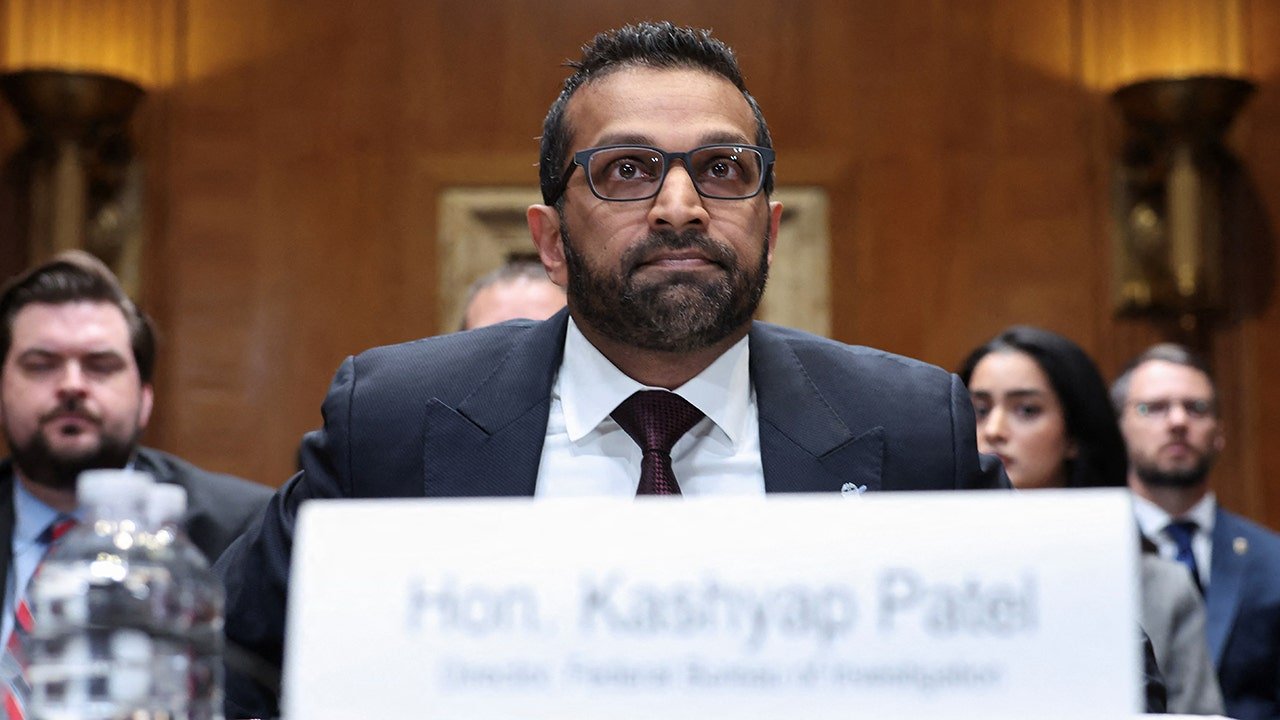
NEWYou can now listen to Fox News articles!
Boston’s sanctuary sheriff was arrested Friday on federal charges after allegedly leveraging his elected position to extort $50,000 from a cannabis executive who was seeking state approval to open a dispensary—a scheme FBI Director Kash Patel called a betrayal of public trust.
Suffolk County Sheriff Steven Tompkins, 67, who oversees more than 1,000 employees in the Boston-area, was handcuffed Friday morning in the Southern District of Florida after a federal grand jury indicted him on two counts of extortion under color of official right, according to a statement from the U.S. Attorney’s Office for the District of Massachusetts.
«When someone entrusted with enforcing the law is accused of breaking it for personal gain, it undermines the public’s trust in every honest officer who wears the badge,» Patel told Fox News Digital. «The FBI will pursue corruption at every level, because no one is above the law. The people of Suffolk County, and the country, deserve leaders who serve them, not themselves.»
Suffolk County Sheriff Steven Tompkins was arrested on Friday in connection to an illegal licensing scheme. (Matt Stone/MediaNews Group/Boston Herald via Getty Images)
SUSPECTED ICE FACILITY ATTACKERS ARRESTED IN BLUE CITY, CHARGED WITH ASSAULTING FEDERAL OFFICERS
Tompkins was appointed sheriff of the Suffolk County Sheriff’s Department (SCSD) in 2013, elected in a 2014 special election, and later re-elected to serve successive six-year terms.
He made headlines in 2019 after booting Immigration and Customs Enforcement (ICE) agents out of the county jail, signing an eviction notice that required hundreds of illegal immigrant detainees to be moved out within 60 days, according to a report from the Boston Herald.
FLORIDA EX-SHERIFF ARRESTED FOR ALLEGEDLY RUNNING ILLEGAL GAMBLING HOUSE THAT GENERATED MILLIONS
According to court documents, a cannabis company applied in 2019 for a retail dispensary license in Boston through the Massachusetts Cannabis Control Commission (CCC). To meet the state’s Positive Impact Plan (PIP) requirement, the company partnered with the sheriff’s department, which agreed to screen and refer graduates from its re-entry program for work at the dispensary’s retail store.
The company’s partnership with SCSD was formalized in a letter signed by Tompkins in 2019 and submitted with its dispensary license application in 2020. The cannabis commission approved the license in 2021 and renewed it in 2022 and 2023, with the company citing the partnership to meet the PIP requirement in each application.
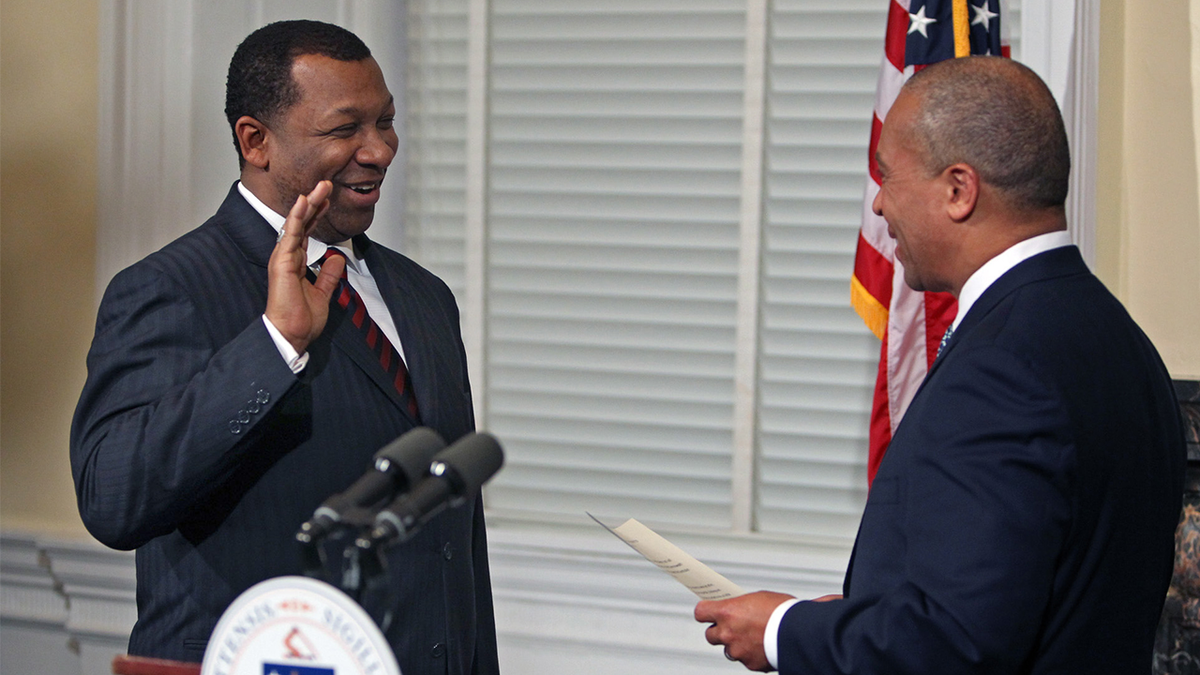
Suffolk County Sheriff Steven Tompkins is accused of pressuring an executive into selling him stocks and then demanding a refund. (John Wilcox/MediaNews Group/Boston Herald via Getty Images)
To raise capital for an initial public offering (IPO) and expand as a publicly traded company, executives sought multimillion-dollar investments from institutions and other high-net-worth investors—not the general public, according to court documents.
By mid-2020, the company was preparing for its IPO by producing audited financial statements, hiring attorneys and obtaining additional financing.
Prosecutors allege Tompkins pressured the cannabis executive for stock, reminding the executive he had helped the company in its licensing efforts. The executive feared Tompkins might exploit his position as sheriff to undermine the partnership with the department, putting both the license and the company’s planned IPO in jeopardy.
PATEL’S IMMIGRATION PUSH AT FBI YIELDS 10,000 ARRESTS SINCE JANUARY
In October 2020, the company asked Tompkins for an updated partnership letter to submit with its license renewal application, according to court documents. Within a month of signing the letter, and after alleged pressure on the executive, Tompkins obtained a pre-IPO stake in the company.
Prosecutors claim that in November 2020, Tompkins wired $50,000 from his retirement account to an account controlled by the executive, purchasing nearly 29,000 shares at $1.73 each. Following a reverse stock split, he held about 14,400 shares valued at $3.46 each.
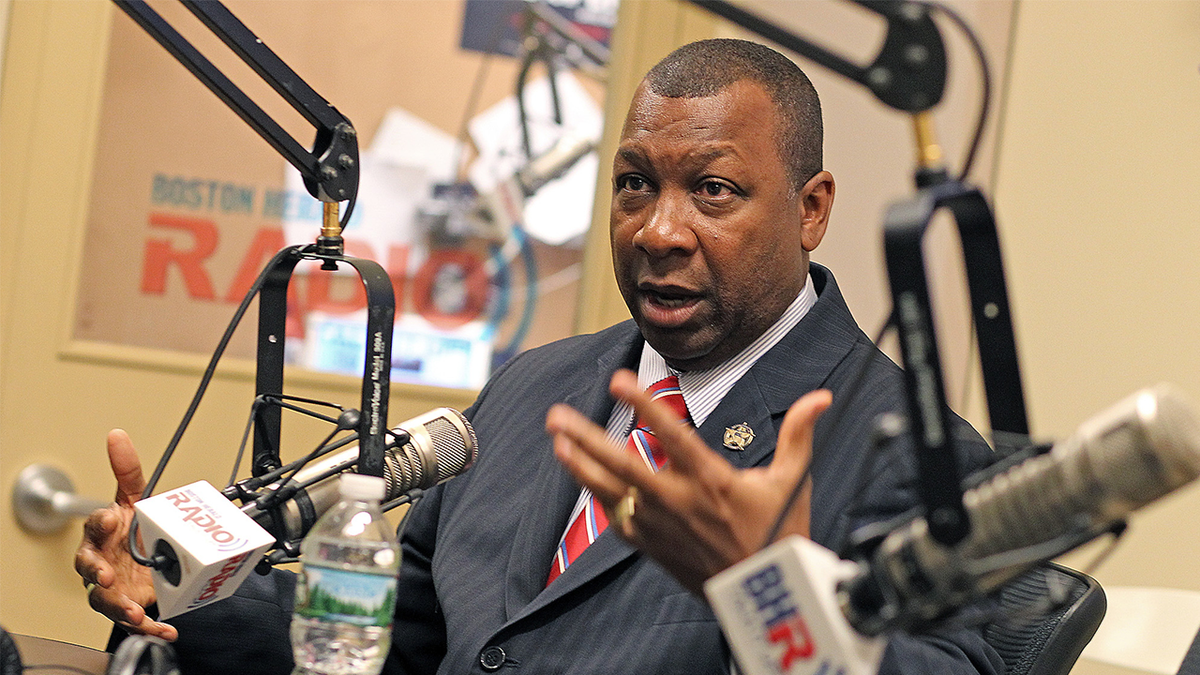
Suffolk County Sheriff Steven Tompkins is facing up to 20 years in prison for each count of extortion. (Matt Stone/MediaNews Group/Boston Herald via Getty Images)
Once the company launched its IPO in 2021, the stock value jumped to $9.60 per share, increasing the value of Tompkins’ $50,000 purchase of 14,417 shares to $138,403.
By May 2022, the value of Tompkins’ stock had dropped thousands of dollars below his $50,000 investment, but he allegedly demanded a full refund. The executive agreed, issuing five checks between May 2022 and July 2023.
Prosecutors claim some checks were marked as «loan repayment» and «[company] expense» at Tompkins’s direction to disguise the nature of some of the payments.
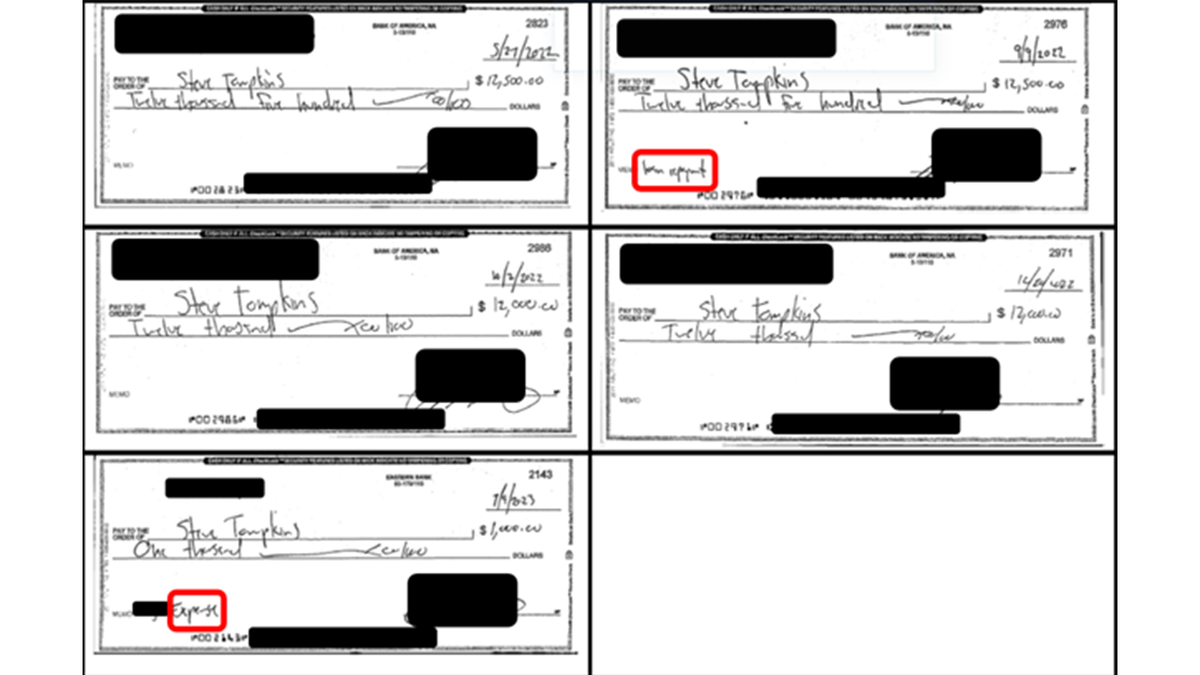
Copies of checks showed payments allegedly made to the Suffolk County sheriff.
US ATTORNEY FOR MASSACHUSETTS SAYS INTERFERENCE WITH ICE OPERATIONS IS ‘DISTURBING,’ THREATENS ARRESTS
U.S. Attorney Leah Foley wrote in a statement that elected officials, particularly those in law enforcement, are expected to be ethical, honest and law-abiding, «not self-serving.»
«His alleged actions are an affront to the voters and taxpayers who elected him to his position, and the many dedicated and honest public servants at the Suffolk County Sheriff’s Department. The people of Suffolk County deserve better,» Foley wrote. «Public corruption remains a top priority for my administration, and we will continue to investigate and prosecute anyone who uses their position of trust and power for their own gain.»
FBI Boston special agent in charge Ted Docks added the act was «clear-cut corruption.»
CLICK HERE TO GET THE FOX NEWS APP
«From his very first day as Suffolk County Sheriff, Steven Tompkins sought to portray himself as a man of the people–a principled public servant and reformer, devoted to the cause of justice. That’s why it’s beyond disappointing that he’s now accused of gaming a system instituted in the interests of public safety and fair play,» Docks wrote in a statement. «We believe what the Sheriff saw as an easy way to make a quick buck on the sly is clear-cut corruption under federal law. The citizens of Suffolk County deserve better, not a man who is accused of trading on his position to bankroll his own political and financial future. Public servants must be held to the highest of ethical standards, and those falling short will be rooted out.»
Tompkins, who faces a sentence of up to 20 years in prison for each count, will appear in Boston federal court at a later date.
boston,police and law enforcement,corruption,crime,kash patel

 POLITICA3 días ago
POLITICA3 días agoLa foto de Javier Milei con los candidatos de La Libertad Avanza en Buenos Aires: “Kirchnerismo nunca más”

 POLITICA2 días ago
POLITICA2 días agoMilei grabará la cadena nacional con un mensaje sobre los vetos orientado a “amurallar el déficit cero y la política monetaria”

 POLITICA2 días ago
POLITICA2 días agoLilia Lemoine reaccionó a las declaraciones de Diana Mondino y dijo que “atentó” contra el Presidente: “Está armado”



